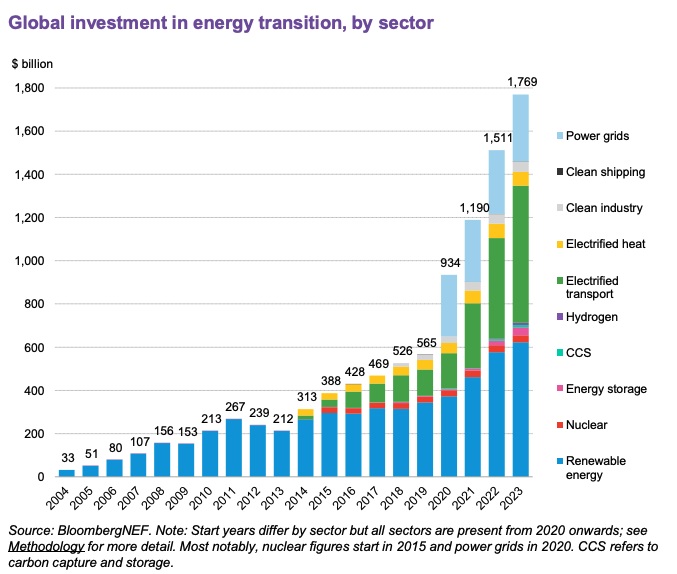
Abundant capital remains available for renewable energy projects, and developers are looking for investors to help get projects over the finish line, expert says. (Source: Shutterstock.com)
Renewable energy’s share in the world of energy deal-making has increased, and the size of the deals have also grown, according to a Houston-based attorney.
Speaking at the NAPE Summit’s Renewable Energy Hub in Houston, Norton Rose Fulbright project finance partner Becky Diffen said the percentage of renewable energy deals in energy M&A jumped to 38.7% last year — up from 12% in 2020. The uptick was mainly driven by a surge in private equity raised for energy transition funds looking for someplace to put capital. Last year, the value of the renewable deals also increased, accounting for 20% of energy M&A. In 2020, renewables accounted for just 0.14% of energy-related deals.

“There’s a lot of capital out there that’s sitting in funds that needs to get invested,” Diffen told a crowd gathered on the exhibit floor. “More money needs and wants to invest in a space than there really has been projects out there.”
The interest comes amid a continued drive to lower global emissions as governments incentivize companies and investors to bankroll lower carbon projects and technologies with the offer of billions of dollars in tax credits.
In the U.S., the Inflation Reduction Act is helping to put some projects, including manufacturing, on a faster track while catalyzing private sector investment. The IRA extended tax credits for solar and wind but also created tax credits for technologies such as energy storage, sustainable aviation fuel, carbon capture and hydrogen.
It also introduced a concept called transferability, that essentially creates a market for tax credits.
“So instead of having to do this fancy tax equity financing, which kind of looks like a joint venture with two parties owning [a project], now we can just sell the tax credits,” Diffen explained. “And that market just in this last year has developed really, really quickly. We’re seeing a tremendous number of projects being built utilizing transferability.
“There are some downsides to it. You don’t get some of the other tax benefits—things like a step up in basis that you might get on the tax equity deal.”
With the IRA in place, attorneys were not doing as much tax equity financing for renewable energy projects, which Diffen said led to more traditional M&A deals. The deal sizes also increased.
One big example: In 2003, an Invenergy-led consortium purchased American Electric Power’s 1.365-gigawatt unregulated, contracted renewables portfolio for $1.5 billion.
“You didn’t used to see those numbers in the renewables space, but now we’re starting to see more and more of that,” she said.
The renewables space is seeing platform investments, with investors putting money into entire companies with a potential for growth. Platform investments were plentiful in 2021 and 2022, when Shell New Energies acquired utility-scale solar and energy storage company Savion, but then dropped off significantly, she said.
Citing its parent company GlobalData, Energy Monitor reported Feb. 12 there was about $559 billion worth of renewables M&A deals recorded in 2023, down from $771 billion in 2022. The slowdown came despite continued investment in renewables.
Data from Enverus show the global deal count for solar and wind increased to 679 in 2023, up from 736 in 2022. The deal value also appeared to grow. Although the deal count declined, the value of those deals increased slightly to $43.8 billion in 2023, up from $43.6 billion.
“There was so much demand that every small developer was like, ‘Well, I wasn’t necessarily planning to sell, but I feel like I need to go out there and at least see what’s happening in the market because the valuations got so high,’” Diffen said. “Then, it got to the point where the really good ones all got taken up, and the smaller ones that were left were expecting these really high numbers.”
The result was a sizeable bid-ask spread. “So, that kind of really slowed us down last year,” she said.
Renewable energy players were also awaiting guidance from the Treasury Department and Internal Revenue Service to give details about certain rules and requirements related to tax credits in the IRA. Some of the proposed guidance has since been released and awaiting feedback.
“We’re hearing a lot of interest in [M&A] again this year that we’re going to start to see more of these bigger platform deals,” Diffen said, adding the firm also expects to see smaller developers attempt to get more capital. “They’re just always in need of people coming in, whether to buy them or invest in them or … a joint venture so that they can fund these projects and move them forward.”
That’s a great opportunity, she said, for investors looking to get into the space and partner with developers. “I hear every day from clients who are looking to buy and looking to source projects and not finding all the projects that they need.”
Recommended Reading
Buffett: ‘No Interest’ in Occidental Takeover, Praises 'Hallelujah!' Shale
2024-02-27 - Berkshire Hathaway’s Warren Buffett added that the U.S. electric power situation is “ominous.”
The One Where EOG’s Stock Tanked
2024-02-23 - A rare earnings miss pushed the wildcatter’s stock down as much as 6%, while larger and smaller peers’ share prices were mostly unchanged. One analyst asked if EOG is like Narcissus.
Uinta Basin: 50% More Oil for Twice the Proppant
2024-03-06 - The higher-intensity completions are costing an average of 35% fewer dollars spent per barrel of oil equivalent of output, Crescent Energy told investors and analysts on March 5.
Kimmeridge Fast Forwards on SilverBow with Takeover Bid
2024-03-13 - Investment firm Kimmeridge Energy Management, which first asked for additional SilverBow Resources board seats, has followed up with a buyout offer. A deal would make a nearly 1 Bcfe/d Eagle Ford pureplay.
Bobby Tudor on Capital Access and Oil, Gas Participation in the Energy Transition
2024-04-05 - Bobby Tudor, the founder and CEO of Artemis Energy Partners, says while public companies are generating cash, private equity firms in the upstream business are facing more difficulties raising new funds, in this Hart Energy Exclusive interview.






